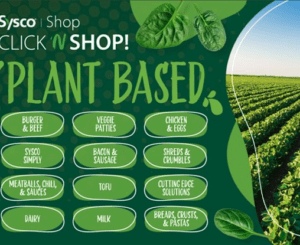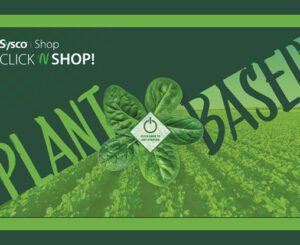What is Plant Based?
Simply put, plant based is a broad term that describes foods or a diet derived from plants, such as vegetables, grains, fruits, nuts, and legumes, rather than animal products. Click here to read more about plant based and other meatless alternative diets.
Why Food Service Operators Should Care About Plant Based:
As we enter 2023, the increasing popularity of plant based proteins, alternative milks, and other plant-forward menu items has presented foodservice operators with new opportunities for customer satisfaction. Embracing plant based options on the menu not only appeals to customers with special dietary preferences but also allows operators to stay ahead of the curve of this growing food trend.
Plant Based Today
Consumer interest in plant based foods has spiked in recent years due to rising consumer focus on healthy ingredients, food allergies, and alternative diets. Also accelerating the plant based food trend is increasing awareness of animal welfare issues and interest in sustainability.
So why are consumers choosing plant based products? As reported by a 2020 Mattson survey,¹ health, environmental benefits, and feeling better were cited by consumers as top reasons for choosing to eat more plant based foods more frequently. Additionally, Datassential² reports that “Gen Z is more likely to eat plant based foods because someone in their family or friend group is a vegetarian or vegan.”¹
What Are The Best Plant Based Alternatives?
Fortunately for operators and customers, the Sysco Simply Plant Based brand offers a robust assortment of products such as plant based meatballs, pea protein burger patties, plant based chili, plant based Bolognese, cauliflower pizza crusts, and the ultraversatile Oat Protein Shred. There are also Sysco Simply Plant Based breads, buns, tortillas, and cornettos. Other well-known national brands like Impossible®, Beyond®, Gardein®, and Morningstar® are also available.
What Are Plant Based Products Made Of?
Ingredients vary from product to product, but common protein sources include pea or soy protein, wheat gluten, nuts, and mushrooms. Some plant based products, like black bean burgers, showcase the ingredients that they are made from, while other analogs attempt to closely mimic the texture and flavor of an animal protein.
You may read the label on some plant based products and question the unfamiliar ingredients, but these ingredients³ play a vital role in simulating the taste, quality, and nutritional content of meat analogs. Learn more about their functions below.
Yeast: often used to provide a “meaty” flavor to plant based products.
Methylcellulose: acts as a binder and extender; other binders include wheat gluten, pectin, guar gum, carrageenan, and cellulose.
Modified starch and gum arabic: act as emulsifiers to help the suspension of one liquid ingredient into another, creating a smoother texture.
Pea protein, legumes, and soy: comprises the protein content of plant based products.
Coconut oil, canola oil, or other fats: lipids that enhance flavor, improve texture, and may extend shelf life.
Vitamins B12, iron, calcium, and zinc: fortified nutrients typically found in animal products that add nutritional value to plant based products.
New Year’s Resolutions – Are Plant Based Diets The Future?
As consumers worldwide prepare for the New Year, many will set health goals involving dietary improvements. With the perceived health benefits of plant based products, foodservice operators stand to benefit from providing options for those seeking meat alternatives when dining out. Many “flexitarians” may choose to limit but not fully exclude meat. While most diners still regularly consume meat, there will always be guests that dine out with friends and family who are seeking vegetarian or vegan menu items. Operators that offer comprehensive plant based menu items will distinguish themselves from competitors whose only vegetarian option is a salad.
Marketing Plant Based to Your Customers
Appeal to the five senses. Describe the taste, texture, mouthfeel, sound, smell, and appearance. Speak to the vegetarian who wants to go out to dinner with their carnivore family, or the omnivore looking to decrease their meat intake while still enjoying a social meal out with their friends. Use a creative twist on plant based versions of classic dishes to jazz up specials, such as Cauliflower Rice Stir Fry or Plant Based Protein Bolognese. For a lighter option, try familiar favorites like lettuce wraps featuring Sysco Simply Plant Based Oat Protein Shred. This type of customer engagement can influence their purchasing decisions, thereby increasing sales.
With the rising awareness of health concerns and the known dietary benefits of a plant based diet, it’s no wonder why more consumers are choosing plant based products.
Check out this featured Plant Based recipe for your new menu today. Click here to view this recipe.

Sources:
1. Datassential, Plant-Based Eating SNAP! Keynote Report
2.Watson, Elaine. “SHIFT20: How Are Consumers Thinking About Plant-based Eating? Mattson Unveils New Survey Data.” foodnavigator-usa.com, 14 July 2020, www.foodnavigator-usa.com/Article/2020/07/14/SHIFT20-How-are-consumers-thinking-about-plant-based-eating-Mattson-unveils-new-survey-data.
3. McClements, D. J., & Grossmann, L. (2021). The science of plant-based foods: Constructing next-generation meat, fish, milk, and egg analogs. COMPREHENSIVE REVIEWS IN FOOD SCIENCE AND FOOD SAFETY. https://doi.org/10.1111/1541-4337.12771.












